US Airways 2008 Annual Report Download - page 71
Download and view the complete annual report
Please find page 71 of the 2008 US Airways annual report below. You can navigate through the pages in the report by either clicking on the pages listed below, or by using the keyword search tool below to find specific information within the annual report.-
 1
1 -
 2
2 -
 3
3 -
 4
4 -
 5
5 -
 6
6 -
 7
7 -
 8
8 -
 9
9 -
 10
10 -
 11
11 -
 12
12 -
 13
13 -
 14
14 -
 15
15 -
 16
16 -
 17
17 -
 18
18 -
 19
19 -
 20
20 -
 21
21 -
 22
22 -
 23
23 -
 24
24 -
 25
25 -
 26
26 -
 27
27 -
 28
28 -
 29
29 -
 30
30 -
 31
31 -
 32
32 -
 33
33 -
 34
34 -
 35
35 -
 36
36 -
 37
37 -
 38
38 -
 39
39 -
 40
40 -
 41
41 -
 42
42 -
 43
43 -
 44
44 -
 45
45 -
 46
46 -
 47
47 -
 48
48 -
 49
49 -
 50
50 -
 51
51 -
 52
52 -
 53
53 -
 54
54 -
 55
55 -
 56
56 -
 57
57 -
 58
58 -
 59
59 -
 60
60 -
 61
61 -
 62
62 -
 63
63 -
 64
64 -
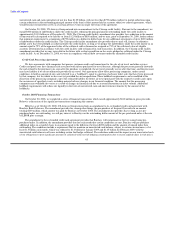 65
65 -
 66
66 -
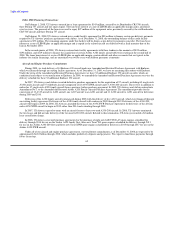 67
67 -
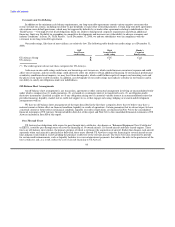 68
68 -
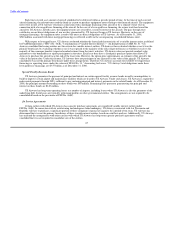 69
69 -
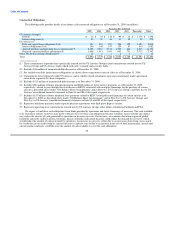 70
70 -
 71
71 -
 72
72 -
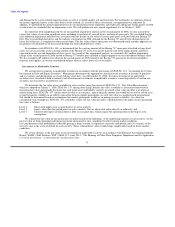 73
73 -
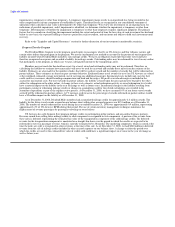 74
74 -
 75
75 -
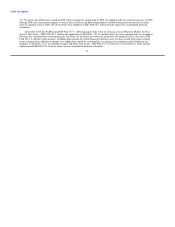 76
76 -
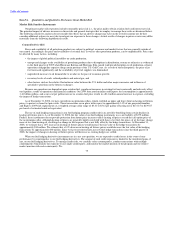 77
77 -
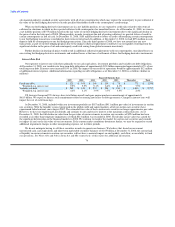 78
78 -
 79
79 -
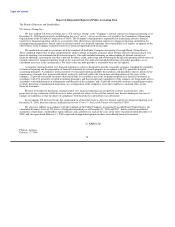 80
80 -
 81
81 -
 82
82 -
 83
83 -
 84
84 -
 85
85 -
 86
86 -
 87
87 -
 88
88 -
 89
89 -
 90
90 -
 91
91 -
 92
92 -
 93
93 -
 94
94 -
 95
95 -
 96
96 -
 97
97 -
 98
98 -
 99
99 -
 100
100 -
 101
101 -
 102
102 -
 103
103 -
 104
104 -
 105
105 -
 106
106 -
 107
107 -
 108
108 -
 109
109 -
 110
110 -
 111
111 -
 112
112 -
 113
113 -
 114
114 -
 115
115 -
 116
116 -
 117
117 -
 118
118 -
 119
119 -
 120
120 -
 121
121 -
 122
122 -
 123
123 -
 124
124 -
 125
125 -
 126
126 -
 127
127 -
 128
128 -
 129
129 -
 130
130 -
 131
131 -
 132
132 -
 133
133 -
 134
134 -
 135
135 -
 136
136 -
 137
137 -
 138
138 -
 139
139 -
 140
140 -
 141
141 -
 142
142 -
 143
143 -
 144
144 -
 145
145 -
 146
146 -
 147
147 -
 148
148 -
 149
149 -
 150
150 -
 151
151 -
 152
152 -
 153
153 -
 154
154 -
 155
155 -
 156
156 -
 157
157 -
 158
158 -
 159
159 -
 160
160 -
 161
161 -
 162
162 -
 163
163 -
 164
164 -
 165
165 -
 166
166 -
 167
167 -
 168
168 -
 169
169 -
 170
170 -
 171
171 -
 172
172 -
 173
173 -
 174
174 -
 175
175 -
 176
176 -
 177
177 -
 178
178 -
 179
179 -
 180
180 -
 181
181 -
 182
182 -
 183
183 -
 184
184 -
 185
185 -
 186
186 -
 187
187 -
 188
188 -
 189
189 -
 190
190 -
 191
191 -
 192
192 -
 193
193 -
 194
194 -
 195
195 -
 196
196 -
 197
197 -
 198
198 -
 199
199 -
 200
200 -
 201
201 -
 202
202 -
 203
203 -
 204
204 -
 205
205 -
 206
206 -
 207
207 -
 208
208 -
 209
209 -
 210
210 -
 211
211 -
 212
212 -
 213
213 -
 214
214 -
 215
215 -
 216
216 -
 217
217 -
 218
218 -
 219
219 -
 220
220 -
 221
221 -
 222
222 -
 223
223 -
 224
224 -
 225
225 -
 226
226 -
 227
227 -
 228
228 -
 229
229 -
 230
230 -
 231
231 -
 232
232 -
 233
233 -
 234
234 -
 235
235 -
 236
236 -
 237
237 -
 238
238 -
 239
239 -
 240
240 -
 241
241 -
 242
242 -
 243
243 -
 244
244 -
 245
245 -
 246
246 -
 247
247 -
 248
248 -
 249
249 -
 250
250 -
 251
251 -
 252
252 -
 253
253 -
 254
254 -
 255
255 -
 256
256 -
 257
257 -
 258
258 -
 259
259 -
 260
260 -
 261
261 -
 262
262 -
 263
263 -
 264
264 -
 265
265 -
 266
266 -
 267
267 -
 268
268 -
 269
269 -
 270
270 -
 271
271 -
 272
272 -
 273
273 -
 274
274 -
 275
275 -
 276
276 -
 277
277 -
 278
278 -
 279
279 -
 280
280 -
 281
281 -
 282
282 -
 283
283 -
 284
284 -
 285
285 -
 286
286 -
 287
287 -
 288
288 -
 289
289 -
 290
290 -
 291
291 -
 292
292 -
 293
293 -
 294
294 -
 295
295 -
 296
296 -
 297
297 -
 298
298 -
 299
299 -
 300
300 -
 301
301 -
 302
302 -
 303
303 -
 304
304 -
 305
305 -
 306
306 -
 307
307 -
 308
308 -
 309
309 -
 310
310 -
 311
311 -
 312
312 -
 313
313 -
 314
314 -
 315
315 -
 316
316 -
 317
317 -
 318
318 -
 319
319 -
 320
320 -
 321
321 -
 322
322 -
 323
323 -
 324
324 -
 325
325 -
 326
326 -
 327
327 -
 328
328 -
 329
329 -
 330
330 -
 331
331 -
 332
332 -
 333
333 -
 334
334 -
 335
335 -
 336
336 -
 337
337 -
 338
338 -
 339
339 -
 340
340 -
 341
341 -
 342
342 -
 343
343 -
 344
344 -
 345
345 -
 346
346 -
 347
347 -
 348
348 -
 349
349 -
 350
350 -
 351
351 -
 352
352 -
 353
353 -
 354
354 -
 355
355 -
 356
356 -
 357
357 -
 358
358 -
 359
359 -
 360
360 -
 361
361 -
 362
362 -
 363
363 -
 364
364 -
 365
365 -
 366
366 -
 367
367 -
 368
368 -
 369
369 -
 370
370 -
 371
371 -
 372
372 -
 373
373 -
 374
374 -
 375
375 -
 376
376 -
 377
377 -
 378
378 -
 379
379 -
 380
380 -
 381
381 -
 382
382 -
 383
383 -
 384
384 -
 385
385 -
 386
386 -
 387
387 -
 388
388 -
 389
389 -
 390
390 -
 391
391 -
 392
392 -
 393
393 -
 394
394 -
 395
395 -
 396
396 -
 397
397 -
 398
398 -
 399
399 -
 400
400 -
 401
401
 |
 |

Table of Contents
Moreover, the Citicorp credit facility, our amended credit card agreement with Barclays and certain of our other financing arrangements
contain minimum cash balance requirements. As a result, we cannot use all of our available cash to fund operations, capital expenditures
and cash obligations without violating these requirements.
Critical Accounting Policies and Estimates
The preparation of our consolidated financial statements in accordance with accounting principles generally accepted in the United
States requires that we make certain estimates and assumptions that affect the reported amount of assets and liabilities, revenues and
expenses, and the disclosure of contingent assets and liabilities at the date of our financial statements. We believe our estimates and
assumptions are reasonable; however, actual results could differ from those estimates. Critical accounting policies are defined as those
that are reflective of significant judgments and uncertainties and potentially result in materially different results under different
assumptions and conditions. We have identified the following critical accounting policies that impact the preparation of our consolidated
financial statements. See also the summary of significant accounting policies included in the notes to the financial statements under
Items 8A and 8B of this Form 10-K for additional discussion of the application of these estimates and other accounting policies.
Passenger Revenue
Passenger revenue is recognized when transportation is provided. Ticket sales for transportation that has not yet been provided are
initially deferred and recorded as air traffic liability on the balance sheet. The air traffic liability represents tickets sold for future travel
dates and estimated future refunds and exchanges of tickets sold for past travel dates. The balance in the air traffic liability fluctuates
throughout the year based on seasonal travel patterns and fare sale activity. Our air traffic liability was $698 million and $832 million as
of December 31, 2008 and 2007, respectively.
The majority of our tickets sold are nonrefundable. A small percentage of tickets, some of which are partially used tickets, expire
unused. Due to complex pricing structures, refund and exchange policies, and interline agreements with other airlines, certain amounts
are recognized in revenue using estimates regarding both the timing of the revenue recognition and the amount of revenue to be
recognized. These estimates are generally based on the analysis of our historical data. We routinely evaluate estimated future refunds and
exchanges included in the air traffic liability based on subsequent activity to validate the accuracy of our estimates. Holding other factors
constant, a 10% change in our estimate of the amount refunded, exchanged or forfeited for 2008 would result in a $38 million change in
our passenger revenue, which represents less than 1% of our passenger revenue.
Passenger traffic commissions and related fees are expensed when the related revenue is recognized. Passenger traffic commissions
and related fees not yet recognized are included as a prepaid expense.
Impairment of Goodwill
SFAS No. 142, "Goodwill and Other Intangible Assets," requires that goodwill be tested for impairment at the reporting unit level
on an annual basis and between annual tests if an event occurs or circumstances change that would more likely than not reduce the fair
value of the reporting unit below its carrying value. Goodwill represents the purchase price in excess of the net amount assigned to assets
acquired and liabilities assumed by America West Holdings on September 27, 2005. We have two reporting units consisting of our
mainline and Express operations. All of our goodwill was allocated to the mainline reporting unit.
In accordance with SFAS No. 142, we concluded that events had occurred and circumstances had changed during the second
quarter of 2008 which required us to perform an interim period goodwill impairment test. Subsequent to the first quarter of 2008, we
experienced a significant decline in market capitalization due to overall airline industry conditions driven by record high fuel prices. The
price of fuel became less volatile in the second quarter of 2008, and there was a sustained surge in fuel prices. On May 21, 2008, the price
per barrel of oil hit a then record high of $133 per barrel and from that date through June 30, 2008 stayed at an average daily price of
$133 per barrel. Our average mainline fuel price during the second quarter of 2008 was $3.63 as compared to $2.88 per gallon in the first
quarter of 2008 and $2.20 for the full year 2007. This increase in the price per gallon of fuel represented an increase of 26% and 65% as
compared to the first quarter of 2008 and full year 2007, respectively. Our average
69
